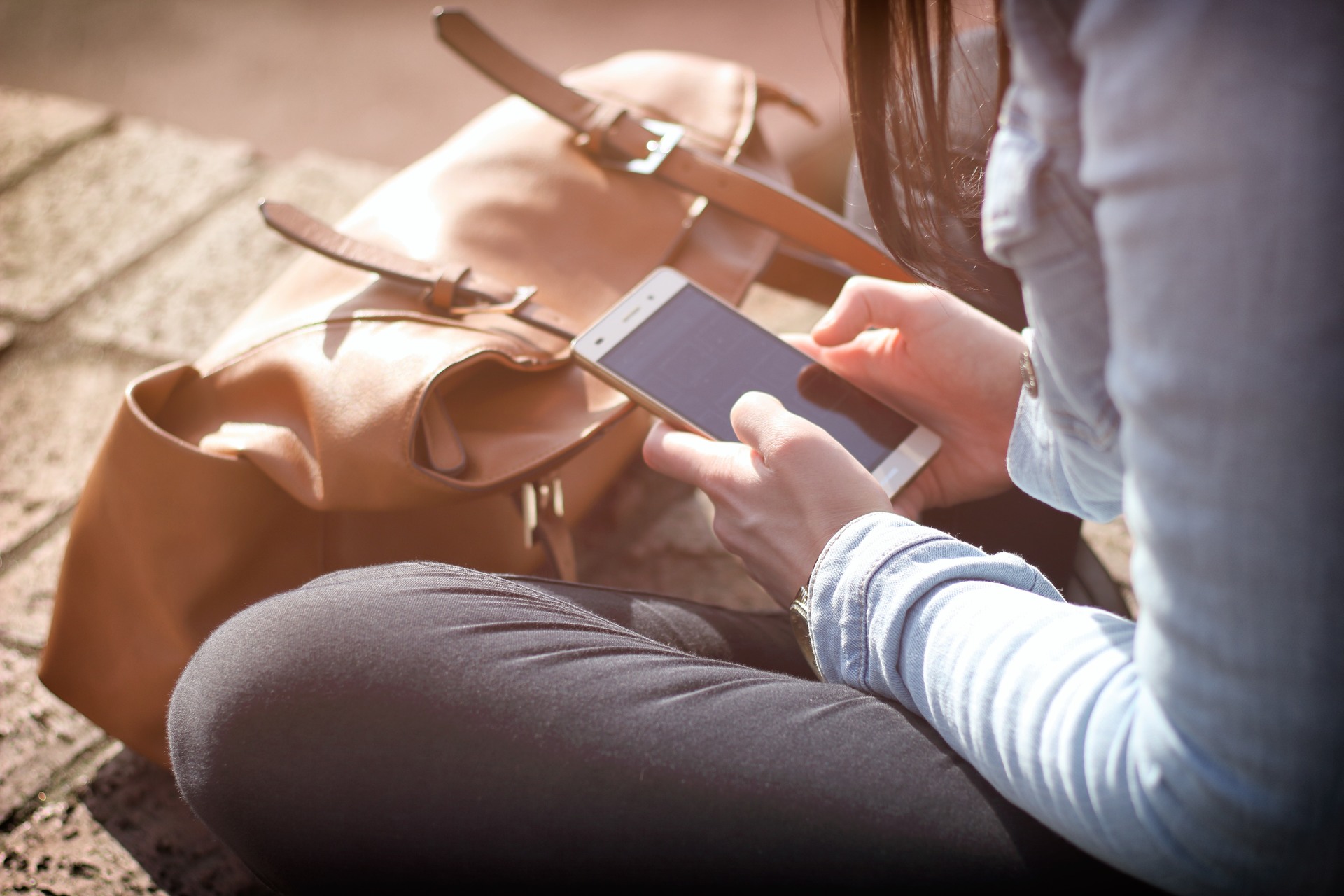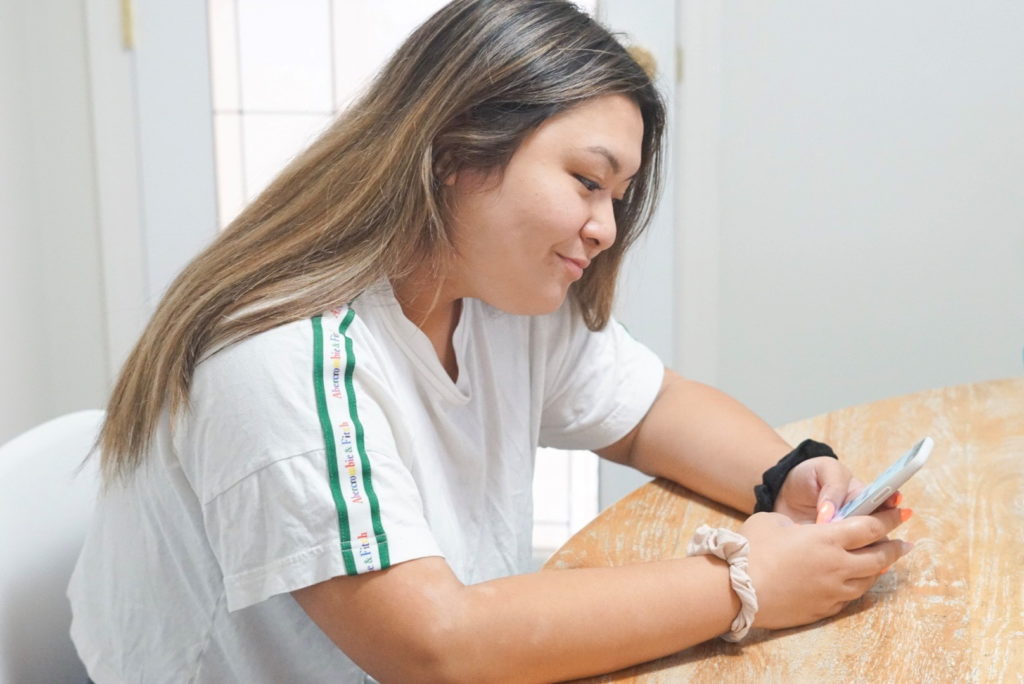sponsored
5 min Read
Navigating mindfulness with my teenager in a digital world

September 23, 2019
sponsored
5 min Read

September 23, 2019

Recently my teenage daughter and I took an online usage quiz and, after seeing our results, I was pretty shocked. I was spending more than two hours or more per day online and my teenager was online more than three hours everyday.
After I had time to think about it, though, my initial surprise wore off.
After all, in my daughter’s world, her cellphone is her lifeline. I’ve noticed how hyperconnected she is with her peers, and how the Fear of Missing Out (FOMO) can provoke anxiety rather than instill happiness. Instantly replying to messages and checking notifications are a must. Keeping up with her “streaks” on Snapchat, chatting with friends, scrolling perfectly curated Instagram feeds, and watching Netflix from her device has become her everyday norm. Although she is a student and has a part-time job, I notice her device is in her hands every chance she gets.
I have threatened to take her phone away as a form of punishment and it felt as if she reverted back to her toddler years, throwing a tantrum like a three-year-old in a candy store.
When I encourage her to do things I did when I was a kid — go outside, ride her bike, play with her sisters, or write in a journal — she laughs, while sarcastically calling me a pioneer.
Needless to say, the cell phone has caused arguments in our home. I regret not setting limits early on, but she was our guinea pig child when it came to technology. We couldn’t have predicted any of this hyper connectivity. We thought it was simple: Give her a phone so we know where she is; talk to her about being safe online; allow her to have messaging and social apps to stay connected with her peers. All of this is true — as long as she used the phone responsibly.

The thing is, I’m a responsible adult and I’ve found it hard to set limits when it comes to my own cell phone use. Admittedly, I’ve fallen down the rabbit hole on social media, compared myself to other people’s curated highlights and felt the need to respond immediately to my messages. If I’ve felt this way, I can only imagine how it feels for my daughter and her peers who haven’t yet gained the confidence and resilience to cope with feelings of isolation and loneliness, not to mention stress, anxiety, and even depression associated with unchecked online use.
It’s why I was happy to learn about the TELUS Wise happiness workshop which aims to engage teens, grades 9-12, in a conversation about building and maintaining a healthy relationship with technology. With input from mental health experts, the workshop offers tips such as promoting Joy of Missing Out (JOMO) versus FOMO and how to limit unhealthy (and often unreasonable) comparisons on social media. It also recommends taking a break from technology, beginning with a 24-hour digital detox — an idea that really appealed to me.
I’ve been looking to encourage mindfulness practice in our home for a while now. Mindfulness is defined as a mental state achieved by focusing one’s awareness on the present, while calmly acknowledging and accepting one’s feelings, thoughts and bodily sensations. Studies show that practicing mindfulness is associated with happiness, reducing stress and anxiety and improving our psychological and physical well being.
But I’m finding that even when I model mindful practices like journaling, hiking, and meditating, it isn’t enough when it comes to encouraging my teenager to put down her device; nor does threatening to take her phone away. So I decided to participate in the happiness workshop and take the TELUS Wise 24-hour digital detox challenge with her.
Here’s are some of the immediate results:
● While we were driving, my daughter pointed out a townhouse development recalling when it was a forest. Rather than looking down at her cellphone, she noticed her surroundings.
● I didn’t have to tell my daughter to get off of her phone at all because she didn’t have it.
● I finished the novel I have been “trying” to read all summer.
● I enjoyed some lovely face-to-face conversations with my daughter and family.
● I wanted to bottle up the echo of laughter I heard coming from the dining room while my teenager played a board game with her siblings.
● Disconnecting gave us time to engage in activities we may not have chosen otherwise.
Every one of those moments is precious to me and it’s exciting to think this may be just the beginning of a new way of managing technology in our house. One of the lasting effects of the detox is that my daughter has discovered it isn’t so bad to disconnect every now and again. In fact, she says she’s going to try it more often, confident her friends will still be there when she turns the phone back on.
For me, I’ve come to realize that while I would love to turn back time and raise my kids before the digital world took over, it’s not possible. I can, however, actively participate in disconnecting with my family, while creating memories where we are fully present with each other.
Of course, we may still have some work ahead of us. As our very first digital detox came to a close, I told my daughter I was proud of her for being a technology “pioneer” with me for the day. She laughed, then said, “You’re welcome. Now can I have my phone back?”
Sponsored by: Telus
